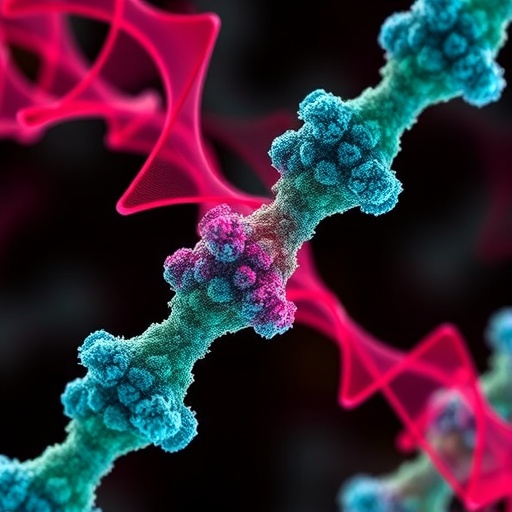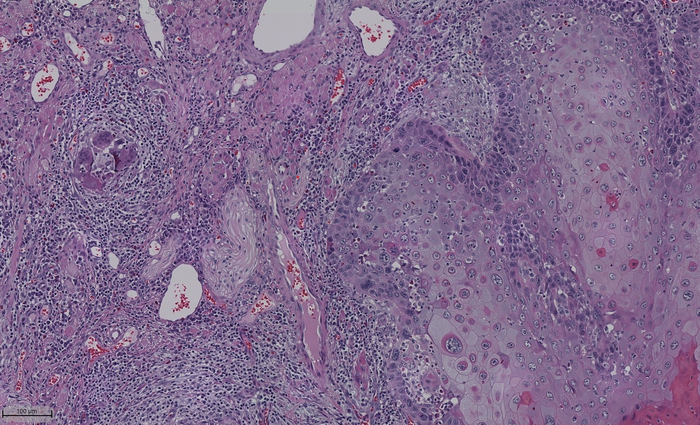Genetic editing, a groundbreaking realm of biotechnology, continues to grasp the attention of the scientific community as it offers potential therapies for previously unmanageable diseases. Notably, the CRISPR (Clustered Regularly Interspaced Short Palindromic Repeats) paradigm has emerged as a frontrunner in genomic modification. Initially celebrated for its precision and efficiency, emerging evidence suggests that CRISPR might invite unintended consequences, prompting researchers to seek alternatives that promise safer and more effective outcomes.
CRISPR operates by harnessing RNA and bacterial proteins to target and edit DNA within an organism’s genome. This sophisticated mechanism was originally identified in bacterial immune systems, which employ it to recognize and neutralize viral DNA. However, when adapted for human applications, CRISPR’s transformative potential is juxtaposed with significant risks. Instances of off-target edits have been recorded, leading scientists to caution about life-altering health implications. Furthermore, the long-term aftermath of CRISPR interventions remains largely uncharted waters, stirring concerns over elevated cancer risks due to unanticipated mutations in the genetic material.
One of the pressing challenges associated with CRISPR is the possibility of an immune response that can eliminate modified cells. This reaction not only negates the intended therapeutic benefits of the CRISPR correction but may also precipitate additional health complications, such as adverse inflammatory conditions. In this context, a study spearheaded by researchers from the University of California, San Diego, and Yale University presents a promising foray into safer genetic editing methodologies. This study introduces alternative RNA editing paradigms that strive to minimize both the potential for collateral damage and the likelihood of detrimental immune responses.
The groundbreaking research shifts the spotlight onto two innovative editing systems that leverage RNA to enact precise revisions in genetic sequences. Diverging from CRISPR’s traditional approach, these systems champion specificity and the ability to facilitate temporary modifications, thereby mitigating many of the risks associated with permanent genomic alterations. As highlighted by Gene Yeo, Ph.D., the lead researcher of the study, the shift towards human-based editing systems signifies a conscious effort to enhance safety and efficacy in the genetic editing landscape.
This research specifically investigates small nuclear RNAs (snRNAs), a class of RNA molecules located within the cell nucleus. These molecular tools function by swapping particular nucleotides—designated as “letters” of the genetic code—effectively altering nucleobases in a manner that can be more controlled and less invasive. Key discoveries from the study enable modifications whereby adenine can be engineered to signify guanine and uracil can be transmuted to target pseudouridine. These operational enhancements translate into tangible progress in the realm of RNA editing.
Research findings showcase the small nuclear RNA approach’s clear advantages when juxtaposed with established RNA editing tools. The comparisons reveal that this method excels at targeting complex RNA structures, which typically pose challenges for previous genetic intervention techniques. These advancements culminate in a commendable reduction in errant edits, thus promising a robust framework that ensures greater accuracy in genetic engineering. Notably, in experimental models of cystic fibrosis, this innovative method displayed remarkable capabilities in correcting defective genes with unprecedented efficacy.
The inception of this research was rooted in pivotal insights gathered from the CRISPR framework. The early success of CRISPR-Cas9 stemmed in part from the strategic incorporation of a nuclear localization sequence, which directs editing components to their intended destinations within the nucleus. This insight encouraged the research team to explore whether confining engineered RNA base editors spatially to the nucleus would yield similarly beneficial results, leading to reduced detrimental interactions and more targeted results in gene editing.
The implications of rewriting the genetic code using non-invasive methodologies are vast and transformative. As the research indicates, embracing small nuclear RNA editing may unveil new avenues for therapies targeting a spectrum of diseases, encompassing neurodegenerative ailments, cardiovascular conditions, and immune disorders. The anticipation surrounding the potential applications of this technology reflects a consensus among scientists that the advantages highlighted in this study signify a pivotal step toward future advancements in medicine.
As researchers delve deeper into the realm of engineered RNA modifiers, there is palpable excitement about the prospects ahead. The desire to bypass the obstacles posed by CRISPR’s known shortcomings fuels ongoing discussions in scientific circles. Genetic editing’s evolution towards more nuanced and precise techniques sets the stage for potential therapeutics that prioritize patient safety while advancing healthcare outcomes.
In this era of rapid scientific evolution, the intersection of molecular biology and genetic engineering serves as a cornerstone for future discoveries. The collaborative effort demonstrated by the researchers at UC San Diego and Yale University offers a glimpse into a future wherein genetic interventions are both safe and potentially life-saving. The momentum spawned from these findings may ripple through the scientific community, influencing research trends and novel therapeutic explorations in the years to come.
While initial findings are promising, continuous exploration and validation in diverse biological contexts remain paramount. The complexity of human genetics necessitates a cautious approach, balancing the fervent pursuit of innovation with robust ethical considerations. As with any advancing frontier in science, maintaining a dialogue about the ramifications of genetic modifications is crucial to ensuring that breakthroughs in biotechnology align harmoniously with societal values.
Ultimately, this new research casts light on the potential for transforming genetic editing practices. By illuminating the limitations of current methodologies such as CRISPR and proposing alternatives that innovate without compromising safety, the study establishes a pathway for future research endeavors. Such developments emphasize the ongoing commitment of the scientific community to harness the power of genetic editing responsibly, paving the way for therapies that could change lives while safeguarding the well-being of patients.
In conclusion, the promising initiation of small nuclear RNA editing represents a significant stride in genetic engineering. As scientists and clinicians look to synthesize lessons learned from both successes and challenges, the emergence of safer, more precise techniques represents a transformative opportunity for the future of medicine, heralding advancements that could reshape the treatment landscape for a multitude of genetic disorders.
Subject of Research: Novel RNA-based genetic editing methodologies
Article Title: Safer Alternatives to CRISPR for Genetic Editing Explored
News Publication Date: September 18, 2025
Web References: Nature Chemical Biology
References: Not Applicable
Image Credits: Not Applicable
Keywords
Tags: biotechnology advancements in geneticsemerging gene editing methodsgenetic editing technologiesimmune response to gene editinglong-term effects of CRISPR interventionsoff-target effects in gene editingrisks of CRISPR gene therapysafer alternatives to CRISPRsmall nuclear RNA base editingtherapeutic potential of genetic modificationUC San Diego research breakthroughsunintended consequences of CRISPR






